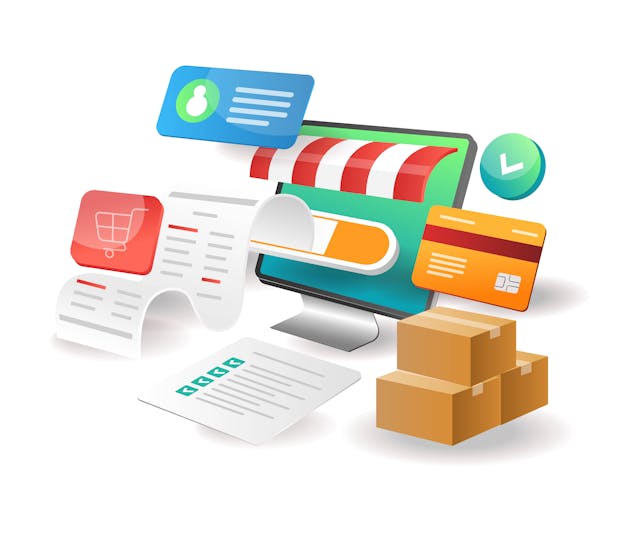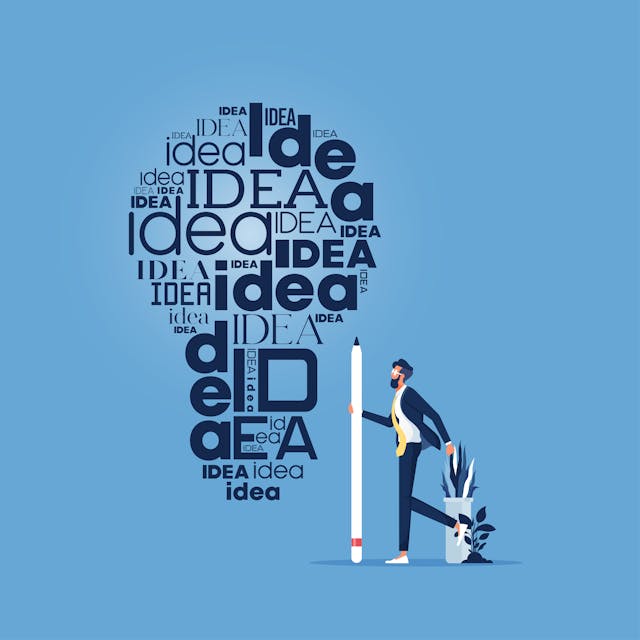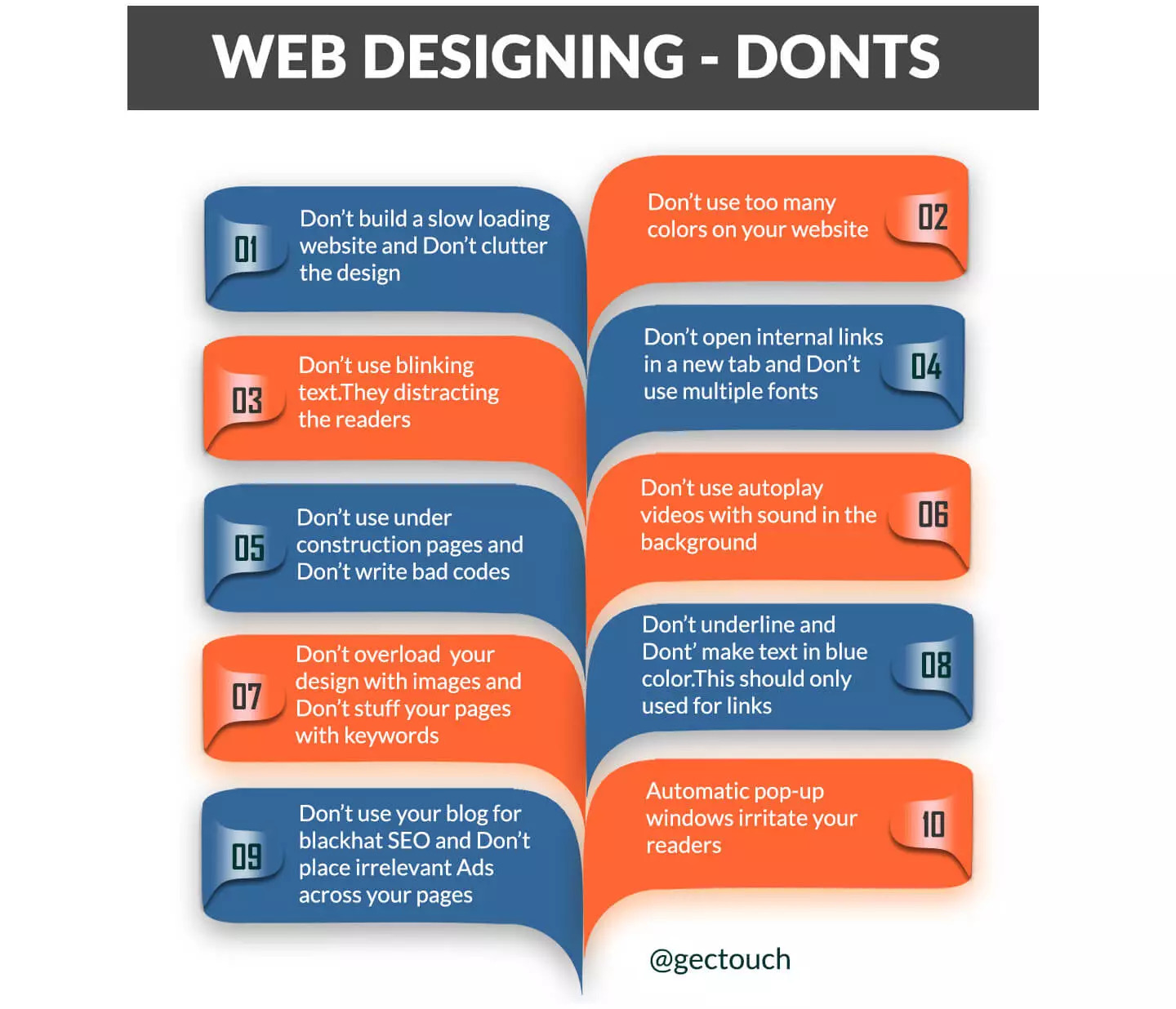7 Stages of a web designing process - Learn the basics
Web design is a process of planning and building. Web design includes layout/format, colors, Logo design, text styles, structure, Graphic design, Typography, Images, call-to-action-buttons, Wireframes, and storyboards. However, a website is more than just a collection of pretty images and well-worded phrases.
A website is the core of all your online marketing activities. If you look at all the marketing channels and techniques what they actually do is bring visitors to your website. The main purpose of a website is turning the visitors into customers, in marketing terms this is called conversions. A bad website will basically cause you to waste your money on other marketing methods Because you don't need more visitors if you can't turn them into customers. So the better your website is more visitors are converted into your customers.
What is website designing?
Web designing is the act of analyzing, understanding, planning, and designing ideas in a particular sequence to put all of them together in a digital platform where it will communicate with people. The dictionary meaning for communicating is "share or exchange information, news, or ideas" which means a website must be interactive with the visitors.
So the first and foremost important aspect is the design of a page. The complete web designing process must involve 7 development stages. Here I must explain the terms "web developing" and "web designing". Technically, a web designer only designs a website layout and other visual elements of the website. Web Developer takes that design and makes a functioning website from it. Web developers use HTML, CSS, Javascript, Frameworks ( JS, Ember), CSS preprocessors (Sass) PHP, and other programming languages to bring life to the designs. Simply says the visual aspect of the site called "design" and the invisible design of the coding side, called "develop."
7 Stages of a Web Designing process
- Analyzing the requirements
- Planning
- Designing
- Developing
- Testing and Launch
- Promote the site
- Maintenance
A good web design includes formatted layouts, best chosen color schemes, well crafted logo design, appropriate text size, Graphic designs, CTA buttons and story-boards.
Analyzing the requirements
- The first step in web designing is analyzing. Simply known as researching. It starts with a good understanding of your purpose of the website.
- What is the goal or main objective of your website? Clear goals focusing on the organization move forward.
- Who is your target audience? Different types of websites have visitors with different functionality. So we consider their interest and age for the best design of the website.
Planning
Planning involves two steps,
Developing a Site-Map
The sitemap ensures that you’ve considered all the main topic areas of the site, showing their relationship to each other and defining, how the site's overall navigation should be structured. The sitemap allows you to understand how the inner structure of a website looks like but doesn’t describe the user interface. The main reason for developing the sitemap is to build a user-friendly and easy to navigate website.
Wireframe creation
Wireframes provide a visual representation of the content that will appear on each page. But it doesn’t contain any design elements such as colors, logos, etc. the wireframes provide a guide for defining content hierarchy on the page.
Designing
Designing involves Page Layouts and Content Writing.
Page layout
The third step of the web design is to design how the website will look. Use the gathered information to plan your design. All the visual content, such as images, photos, and videos is created at this step. The customer and target audience must be kept in mind while you work on a design. The organization’s brand plays an important role in this part, the designer will convey key brand perceptual ideas within the design. In the design phase, it is also important to incorporate elements like logos, images, and colors. It will help to strengthen the identity of the company.
Content writing
Content writing involves also the creation of catching headlines, text editing, writing new text, create videos, slideshows, compiling the existing text, etc., this takes time and effort. As a rule, the client undertakes to provide website content ready to migrate to the site.
Developing
The developing stage is nothing but where the site itself is created. A website usually has several pages like a home page, subpage, blog page, a form that can be based on templates.
When your design is approved, the pages need to be turned into actual web pages written in HTML and CSS. Coding will bring life to the site. Software such as word press and Adobe Dreamweaver can help a designer to work on a web page, with drag-and-drop features, pre-built functions, and buttons to add links and images.
Testing and Launch
Before the site is launched, it should be tested. Every single link should be tested to make sure that there are no errors. You should check every page, every script, also spellings. As part of testing, you should check that all the code written for your website is valid. Valid code is also important for SEO.
It is time to deliver the site. FTP (File Transfer Protocol) software is used for that purpose. When your site uploaded, the site should be run yet another. This is to confirm that all files have been uploaded correctly.
Promote the site
Now your website is online, and it’s time to promote it.
Driving traffic to a site can include:
Sending newsletters to highlight new content.
The other important step is Search Engine Optimization. SEO is the optimization of website elements like title, keyword, which can help your site achieve higher rankings in the search engines. Advertising with PPC ads on Google or ads on other sites.
Maintenance
Website maintenance is important for the long-term health and success of a website, Updating content, photos, videos, making changes to the backend, and fixing broken links whatever the site was built to present. A blog is a great way to keep a site updated. If you use a CMS, regular updates will prevent you from bugs and decrease security risks. It will help you to keep your website up to date. Many designers offer maintenance packages at reduced rates.
With a little research and planning, your website design will be more informed.

Rajanarthagi
Content writer and Marketer
An enthusiastic SEO expert, passion for digital marketing with two years of expertise in writing Digital Marketing and SEO content. She is a Master of Business Administration graduate from a reputed university in south India. Her passion for SEO and online marketing helps her to stay up to date with the trends and strategies. Follow her on social media sites, to stay up to date with SEO, and Digital Marketing, Updates. To contact Raji, visit the contact page.





